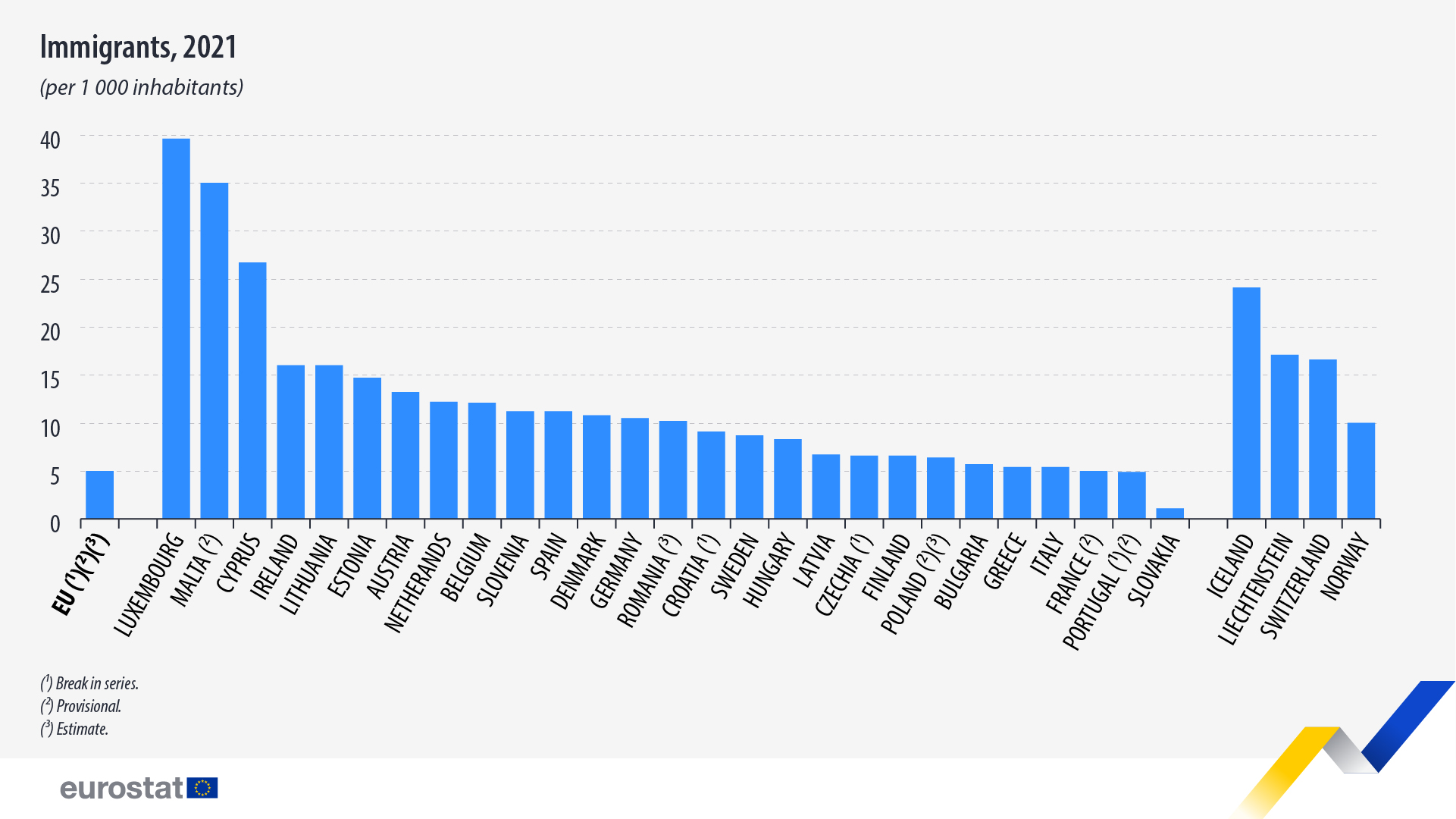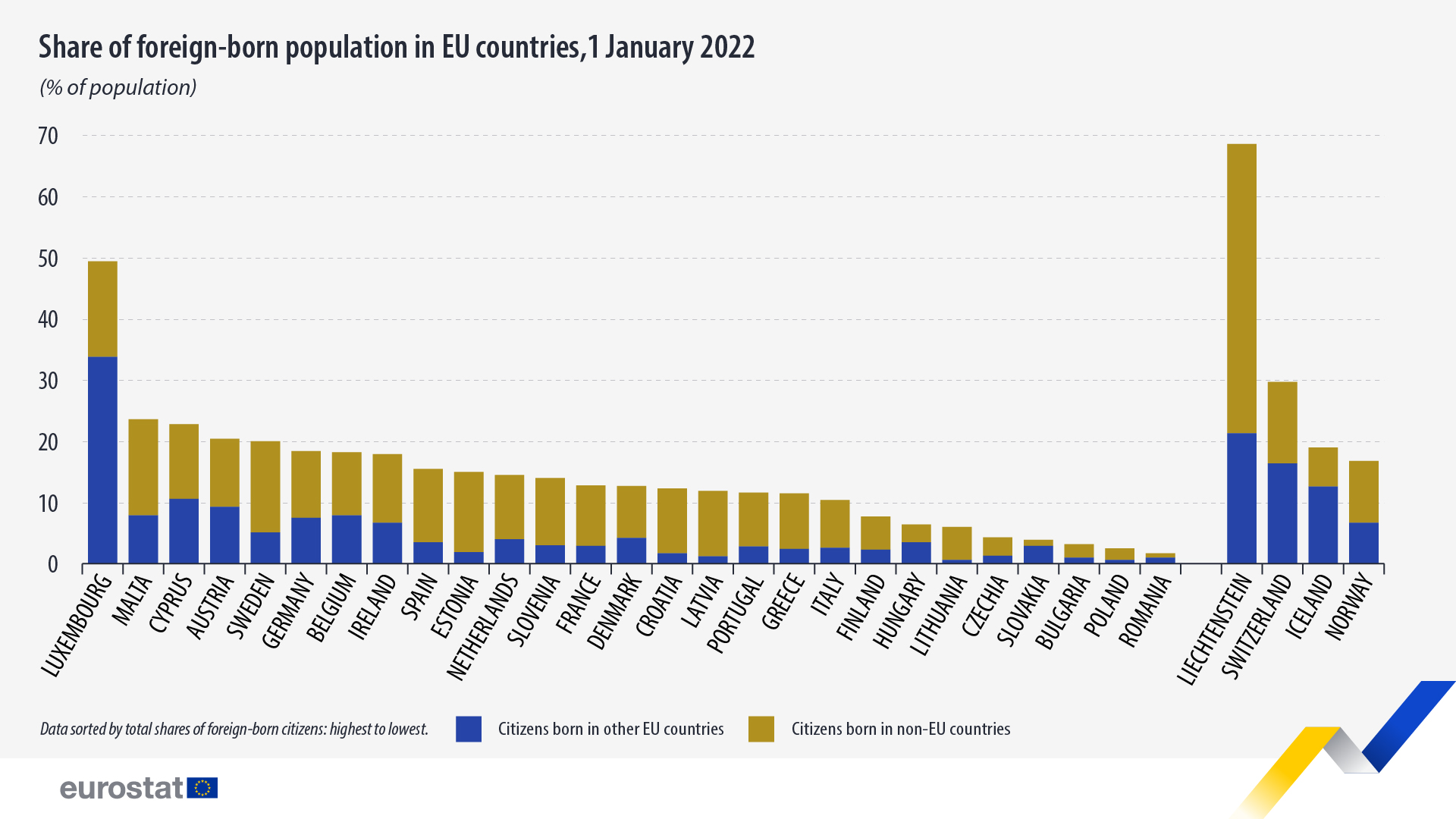In 2021, there were an estimated 2.3 million immigrants coming to the EU from non-EU countries and about 1.1 million people from the EU who emigrated to a country outside the EU.
Data show an important increase compared with 2020 when an estimated 1.9 million immigrants to the EU from non-EU countries and about 956 thousand people emigrated from the EU to a country outside the EU. In addition, 1.4 million people previously residing in one EU country migrated to another EU member in 2021 (1.2 million in 2020).

In 2021, there was an estimated 5 immigrants per 1 000 people in the EU. Relative to the size of the resident population, Luxembourg recorded the highest rate of immigration in 2021 (almost 40 immigrants per 1 000 people), followed by Malta (35) and Cyprus (27). In contrast, Slovakia registered the lowest rate of immigration, with 1 immigrant per 1 000 people. This country was followed by Portugal and France, each with 5 immigrants per 1 000 people.
Foreign-born population in 2022
On 1 January 2022, almost half (49.4%) of the population in Luxembourg was foreign-born. This EU country was followed by Malta (23.6%) and Cyprus (22.7%) as the EU members with the highest shares of foreign-born population. In contrast, the lowest shares were recorded in Romania (1.7%), Poland (2.5%) and Bulgaria (3.2%).
In absolute terms, the biggest populations of foreign-born citizens (from other EU members and non-EU countries) were registered in Germany (15.3 million people), France (8.7 million) and Spain (7.4 million).

In relative terms, Luxembourg had by far the biggest community of citizens born in another EU country, 33.8%, followed by Cyprus with 10.6% and Austria with 9.3%. Belgium and Malta also registered high shares of citizens born in other EU countries, with 7.9% each.
Poland and Lithuania, on the other hand, had the smallest shares of citizens born in other EU countries, with only 0.6% each. Bulgaria and Romania also recorded low values, with 1.0% each.
When it comes to citizens born in non-EU countries, the highest shares were recorded in Malta (15.7%), closely followed by Luxembourg (15.6%). These two EU members were followed by Sweden (14.9%), Estonia (13.1%) and Cyprus (12.2%). Registering the lowest shares of non-EU-born citizens were Romania (0.7%), Slovakia (1.0%), Poland (1.9%), Bulgaria (2.2%) and Hungary (2.9%).
Compared with 2021 (in absolute terms), 13 EU members saw the number of citizens born in non-EU countries and in EU countries both increase in 2022 (Belgium, Bulgaria, Denmark, Estonia, Ireland, Luxembourg, Hungary, Malta, Netherlands, Austria, Slovakia, Finland and Sweden), while five members saw the opposite trend with the number of both those groups of citizens decreasing (Czechia, Greece, Italy, Latvia and Romania).
Some other interesting trends were observed: in Germany, France, Spain, Cyprus, Lithuania, Poland and Slovenia, the number of non-EU-born citizens increased while the number of citizens born in other EU countries decreased. The opposite was registered in Croatia (to a very small degree) and Portugal, where the number of citizens born in other EU countries increased, but the non-EU foreign-born population decreased.






























Discussion about this post